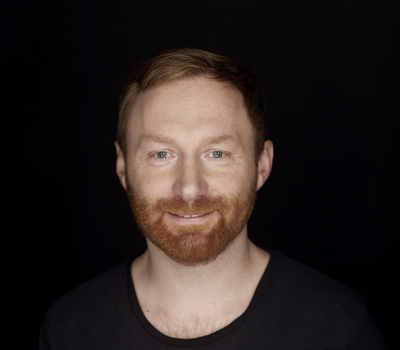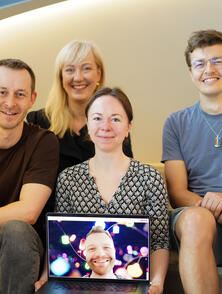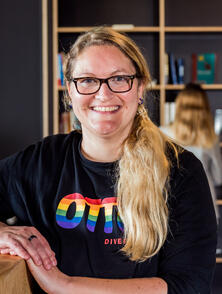What is the article about?
Some see the task of ‘replacing outdated software’ as punishment. Well, I see it differently! In this article I’ll explain how we successfully introduced an extensive new system and resolved over 100 dependencies.
Software, just like natural organisms, has a finite lifecycle. However, the end of its useful lifetime does not necessarily mean ‘The End’ – it can also be the beginning of something new. In this sense, there is something evolutionary about software replacement.
In harmony with change
We are in a transformation process. OTTO is constantly reinventing itself and has embedded change in its DNA. As a company with a long business tradition, OTTO naturally has systems that have been with us for a long time. Our Digital Asset Management (DAM) system was originally purchased for catalogue production: it helps to centrally manage and locate content. Today, this system needs to manage millions of content items, scale rapidly, respond very quickly – and of course deliver the right results. In short, it should help us to establish OTTO as a platform. But how well can this work with a system that has been around since the ‘nineties?
A dated sociotechnical system
The answer had numerous different aspects. Essentially, however, we always came back to the same realisation: the current system was an obstacle to the future viability of the company. For example, rolling out a new feature took a long time, was error-prone, or was simply no longer possible.
In addition, systems not only have technical dependencies, as employees have learned to circumvent the weaknesses. Workarounds have established themselves that not everyone knows about and which are difficult to identify. A legacy system is therefore not just a component but entails a great number of highly varied dependencies.

Because behind every term was the intriguing question: “What happens when we switch it off?"
Identifying and categorising dependencies
To begin with, all we had to work with was a list with a handful of terms. But that didn't put us off, quite the opposite – we were motivated to solve the mystery. Because behind every term was the intriguing question: “What happens when we switch it off….?”
Over the years, many different people have contributed to our legacy system. Accordingly, it was difficult to find just one person who knew all the interrelations.
Precisely for this reason, it’s important in a process like this to first understand which specific dependencies exist, and why. It’s equally important to sharpen the scope and clarify exactly where the boundaries are.
To do this successfully it helps to define criteria that make the risk more tangible. For example, these criteria have helped us to gain clarity on:
- Types of dependency – e.g. is it a specialist or technical process?
- Data on traffic volumes
- Contact people
- Functions applied
- Direct or indirect dependency
- Degree of encapsulation.
At the end of the day, these criteria are variable and also bound to the respective system that is being replaced.
From discovery to implementation
After the discovery phase, the list of dependencies had grown considerably to almost 100 entries. The good thing was, we already had a strategy to tackle almost all of these.
In addition, Sharedien was purchased as a new digital asset management system. Its smart, native functions for the flexible management, maintenance and organisation of digital content make it very convenient for us to implement business cases. So we had to (!) integrate common elements into the existing system landscape and to draw up a detailed transformation plan. However, that would have made the transition from old to new very cumbersome.
So our task was not only to take the old system off the network as smoothly as possible, but also to transfer all relevant processes to the new system environment. To do this we expanded the core and began working together in three distributed remote teams to replace the old DAM.
Applying different strategies for success
Since there was no one-size-fits-all solution for switching the old system off, we developed various measures that we distributed among our teams. We worked together in agile cycles on this in a well-coordinated way.
At the implementation launch we were driven by three clear and fundamental prerequisites:
- We consistently removed unnecessary and little-used features
- We integrated and extended our existing API
- We continuously migrated to the target system.
Our benefit: lower complexity and risk, as well as a higher degree of encapsulation for systems that require content. This foundation work was followed by a stronger prioritization for the teams. As a result, other projects were temporarily suspended, which helped sharpen focus and boost speed.

We then proceeded with the following measures:
- transfer of the userbase
- introduction of parallel operations with limited functionality
- extension of the basic functions in the new system
- reduction of functions in the old system
- introduction of a proxy for toggling between both systems’ APIs
- development of a separate tool for the encapsulation of an expiring process.
In this phase we realized that there were a great many exciting and highly varied approaches to establishing our new system. At the same time, we succeeded in supplying existing applications with content smoothly, without clients being forced to change anything.
While accompanying the technical and procedural changes, we also pursued a communication strategy: we succeeded in addressing our stakeholders appropriately via different formats and in building their understanding of the complex interdependencies.
To do this we used user tests and interviews, reviews, developer routines, experts and participants, newsletters, chat groups, etc.
All’s well that ends well…?
Nevertheless, we found that not all information was interpreted correctly. This led to support requests, which we handled with patience and understanding. If there was still a genuine need for a change in the system, though, we implemented this at short notice.
In the end, the legacy system sailed smoothly into the sunset, towing in the new system behind it. There was no big bang; the replacement flowed quietly and progressively. Almost unnoticed, the new system is now in place and working to support our future – until its own turn to go eventually comes around.
My conclusion
While replacing legacy software is a challenge, it can also be fun. The process is very varied and comprises several disciplines beyond IT.
And now, with our new cloud-based Smart Asset Management System, almost 960 users and 200 service providers can work more flexibly and efficiently; they can find relevant content faster in over 13 million assets. At the same time, we have shed the shackles of obsolete software and have streamlined our processes.
As we continue to rely on automation, the next legacy system is already waiting for us. For us, this is by no means a problem, but an exciting new task at OTTO.
Want to be part of the team?
0No comments yet.
Written by

Similar Articles
 Team PITAugust 13, 2024
Team PITAugust 13, 2024About the development of genAI assistants AskARev and Searchbuddy
05Find out (in a very special way) how the PIT team at Otto Group data.works developed the generative AI-based products AskARev and Searchbuddy.ArchitectureDevelopmentOperations StefanieSeptember 28, 2023
StefanieSeptember 28, 2023How to setup a Kanban board in Jira using sub columns
27In this blog post I want to share the evolution of our Kanban board in Jira and how we worked around the missing feature of sub columns.ArchitectureDevelopmentWorking methods





